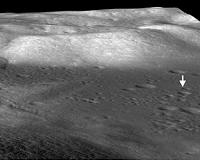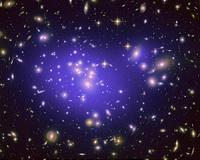|
 Amazing New Sun Images From NJIT's Big Bear Solar Observatory
Amazing New Sun Images From NJIT's Big Bear Solar ObservatoryNewark NJ (SPX) Aug 26, 2010 NJIT Distinguished Professor Philip R. Goode and the Big Bear Solar Observatory (BBSO) team have achieved "first light" using a deformable mirror in what is called adaptive optics at Big Bear Solar Observatory (BBSO). "This photo of a sunspot is now the most detailed ever obtained in visible light," according to Ciel et l'Espace. In September, the publication, a popular astronomy magazine, will publish several more photos of the Sun taken with BBSO's new adaptive optics system. Goode said th ... read more |
. |
|
|
Free Space, Earth, Energy And Military Newsletters - Delivered Daily |
| . | . |
| .. |
Problem hits major European gravity satellite Paris (AFP) Aug 23, 2010
Paris (AFP) Aug 23, 2010A satellite designed to map Earth's gravitational field has been hit by a software glitch and is unable to send its science data back home, the European Space Agency (ESA) said on Monday. The problem began to affect the spacecraft GOCE in late July, Mark Drinkwater, head of mission science at ESA's technical division, the European Space Research and Technology Centre (ESTEC), told AFP. " ... more Japan plans second asteroid sample grab  Tokyo (UPI) Aug 19, 2010
Tokyo (UPI) Aug 19, 2010 Japan will send another satellite on a mission to capture material from an asteroid and bring it back to Earth for study, scientists say. The Japan Aerospace Exploration Agency says a successor to the troubled Japanese spacecraft Hayabusa, which managed to return a capsule to Earth this year, could launch as early as 2104, NewScientist.com reported Wednesday. The cost of the new spacecr ... more Laser detector uses 'darkest' material  Washington (UPI) Aug 18, 2010
Washington (UPI) Aug 18, 2010 U.S. researchers say they've used the world's darkest material - a forest of carbon nanotubes - to develop a sophisticated laser power detector. Scientists at the National Institute of Standards and Technology will use the ultra-dark detector to make precision laser power measurements for advanced technologies such as optical communications, laser-based manufacturing, solar energy con ... more |
.. |
 LRO Reveals Incredible Shrinking Moon  Cosmic Lens Used To Probe Dark Energy For First Time  Instant online solar energy quotes Solar Energy Solutions from ABC Solar |
.. |
|
|
Free Space, Earth, Energy And Military Newsletters - Delivered Daily |
|
|
. |
 Cosmic Accelerators Discovered In Our Galaxy
Cosmic Accelerators Discovered In Our GalaxyLos Angeles CA (SPX) Aug 20, 2010 Physicists from UCLA and Japan have discovered evidence of "natural nuclear accelerators" at work in our Milky Way galaxy, based on an analysis of data from the world's largest cosmic ray detector. Cosmic rays of the highest energies were believed by physicists to come from remote galaxies containing enormous black holes capable of consuming stars and accelerating protons at energies comparable to that of a bullet shot from a rifle. These protons - referred to individually as "cosmic rays" - trave ... read more |
| The contents herein, unless otherwise known to be public domain, are Copyright 1995-2010 - SpaceDaily. AFP and UPI Wire Stories are copyright Agence France-Presse and United Press International. ESA Portal Reports are copyright European Space Agency. All NASA sourced material is public domain. Additional copyrights may apply in whole or part to other bona fide parties. Advertising does not imply endorsement, agreement or approval of any opinions, statements or information provided by SpaceDaily on any web page published or hosted by SpaceDaily. Privacy statement |
| Previous Issues | Aug 25 | Aug 24 | Aug 23 | Aug 20 | Aug 19 |